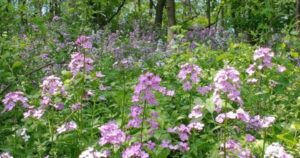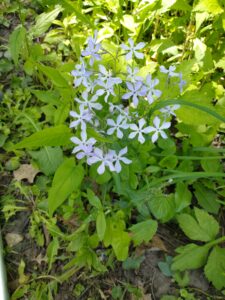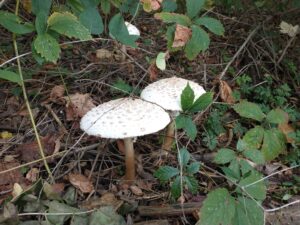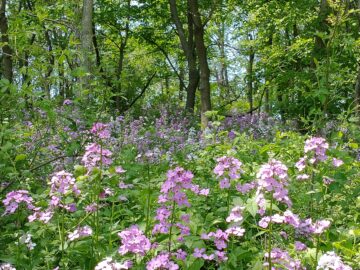Last fall, I shared with you 13 things kids could find on a nature hike. Now that warmer temperatures are here, I want to share more ideas with you and your children about fun, spring exploration ideas. My children and I enjoyed the following activities, and I hope you will with your family, as well.
Watch tadpoles transform into frogs
One year, we collected some tadpoles from a marshy area near our home. We put them in an aquarium to watch them transform into frogs. A large rock placed in the water allowed a place for them to climb up once they breathed oxygen instead of breathing with their gills. Once the tadpoles change into tiny frogs, they need to be fed, so we purchased crickets at a pet store. The crickets sometimes were as big as the frogs which caused me to fret. We kept the aquarium, which had a lid, on our closed, screened-in-porch. It is amazing to watch this natural process in action. After a while, we released the frogs back into the habitat they came from. This learning experience was fun and educational for all, including the teacher. I needed to research on their care to make sure that their environment was healthy and their food appropriate.
Identification and collection ideas

Another fun activity is to identify the many different spring flowers that grow along the trails and roadsides. Various guides help in identification. Find these at your library or use your search engines on your phone or computer. I sometimes use the app on my cell phone that lets me frame a leaf, flower, etc. It brings up answers and websites for further information. You can continue these searches throughout the summer as new plants emerge. Sometimes our nature hikes reveal beautiful specimens we never saw before. Just paying more attention helps us to see more.

In addition to flowers, identify trees by their bark. If it’s early enough, you might not have leaves or nuts from last year to help you identify them. Sometimes kids enjoy taking white paper and crayons or pencils to make rubbings. Place the paper on the bark and lightly color over the paper catching the different ridges and patterns. This works better for some than others.
Look for fungus on trees, soils, and rocks. Do you see different types and colors of mushrooms and toadstools? Do you know the difference? Technically they are the same, but do some research with your children. Don’t touch these unless you are familiar with which are poisonous and which are not poisonous. Since I’m not, I never touch them. I only eat mushrooms purchased from the supermarket. We have discovered some very pretty red ones, which I imagine are screaming a warning at us.

Look at soils, garden
If you’re planting shrubs or trees in your yard, look at the colors of the soil as you dig. It’s interesting to see the different layers. Note the differences in clay or sandy soils versus the rich, dark soils. What do you find? Worms, roots, insects, decaying vegetation?
If you live near a rock quarry, you might ask permission from the owner to come in during some down time to see the different layers in that wall of earth.
Another great idea is to plant a garden. Let the children help you pick out what to plant and come with you when you purchase seeds and young plants at the nursery. You may also choose to start your own plants inside if you have the room, a sunny spot in your home, and time. We did start some seeds but nothing large-scale for a garden. I admire those who do, but I haven’t. On a lovely spring day, after your garden area has been rototilled, grab the hoes, rakes, and children, and plant the garden together. Mark the rows so everyone remembers what is where. Watching the plants emerge and grow can be satisfying. We watch the weather and protect the tender shoots on the hills by covering them with ice cream buckets with the bottoms cut out until the plants are established. The kids help with weeding and harvesting throughout the season. This is good exercise, teaches science and a good work ethic, plus they know where their food comes from. Fresh produce from your garden is healthful and economical.
Build something
Another learning activity is to build a birdhouse. Then watch to see what kind of bird moves in. Research that bird. If you want, you could put out a birdbath or birdfeeder to attract different birds to identify. Again, get yourself a guide from the library.
If you have a child interested in construction, involve him or her in building projects. Perhaps you need new garden boxes or a doghouse. This might not involve nature, but it brings up a whole bunch of other ideas that will involve some research and learning. Enjoy working and exploring together!
For more ideas, take a look at my autumn ideas here.
What other ideas do you have for spring exploration? Please share!
Discover more from Michelle Kaderly Welsh
Subscribe to get the latest posts sent to your email.




6 Responses
My husband and I enjoy taking walks with our grandchildren. We listen for nature sounds. Grandson Rowan and Granddaughter Eden often call back to the birds. 🙂 Nature is amazing! God has blessed us with glorious creations to enjoy. Have a blessed day! 🙂
He certainly has! It is fun and peaceful to hear the different sounds of nature. Children are observant and curious so make the walks more interesting. It sounds like you have lovely adventures with your grandchildren. 🙂 Thanks for writing, Melissa. I hope you have a blessed day, as well.:)
I hesitate to even leave this comment because it is not an original idea. We purchased an Audubon Guide Book for Birds and although we are not avid birders, it has helped us identify more birds.
Those guide books are quite handy! Thanks for sharing your suggestion, Gretchen. I bet you can identify many types of birds after using your guide for some time.
We enjoy taking long walks and hiking through nature as well. We purposefully pause to listen to all the sounds in nature. It’s a marvelous and peaceful way to appreciate our blessings and the beauty around us. We would ask the kids (when they were with us) what they hear. Making them be quiet enough to hear. Identifying frogs, cicadas, crickets, and birds,.. and listening to the wind whisteling through the trees and leaves is one of my favorite things to do. Also, my husband is quite the “bird whisperer” and can mimic and call back to different birds. It’s important to pass this treasure on to our kids and grandkids. Thanks for your tips and ideas Michelle!
Thanks, Anne! Your family walks sound lovely. Thanks for sharing more ideas with us! 🙂